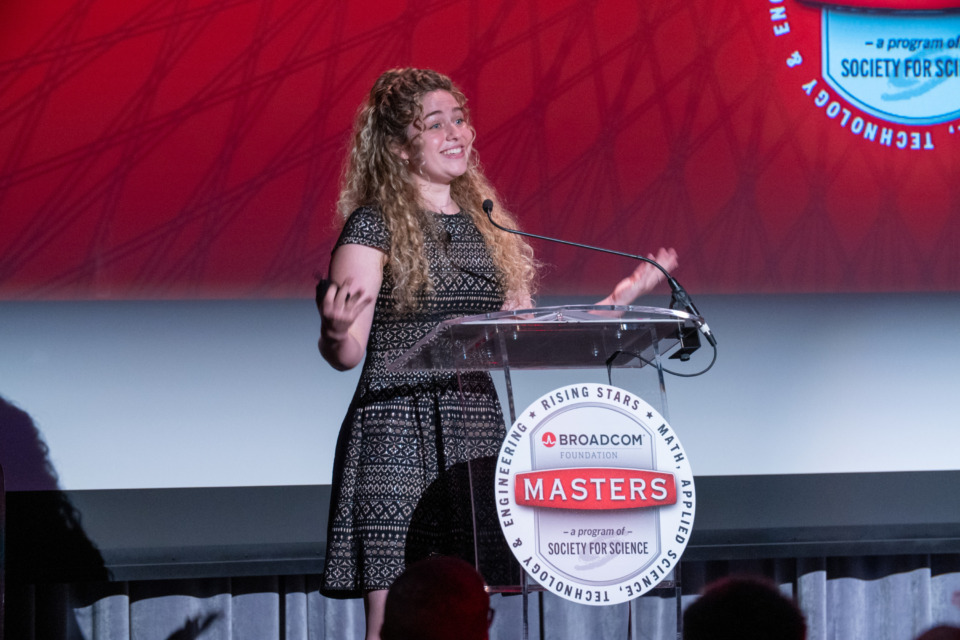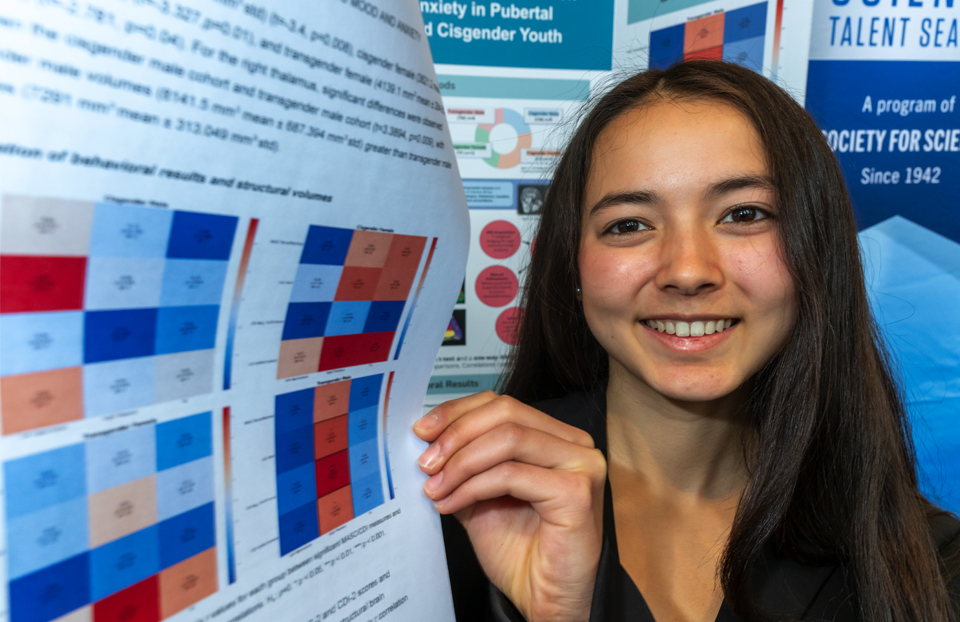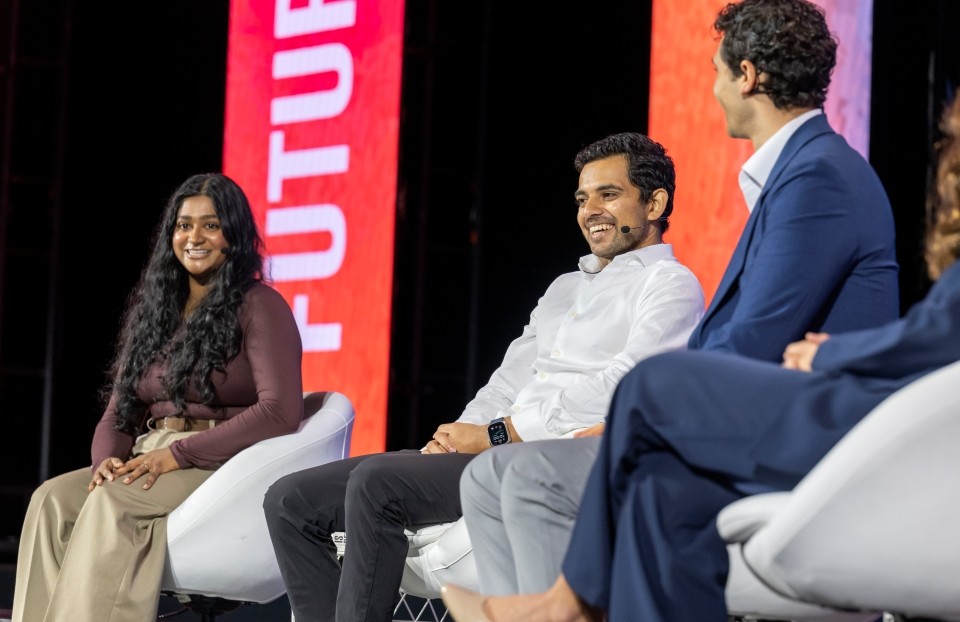From science fairs to red carpet premieres
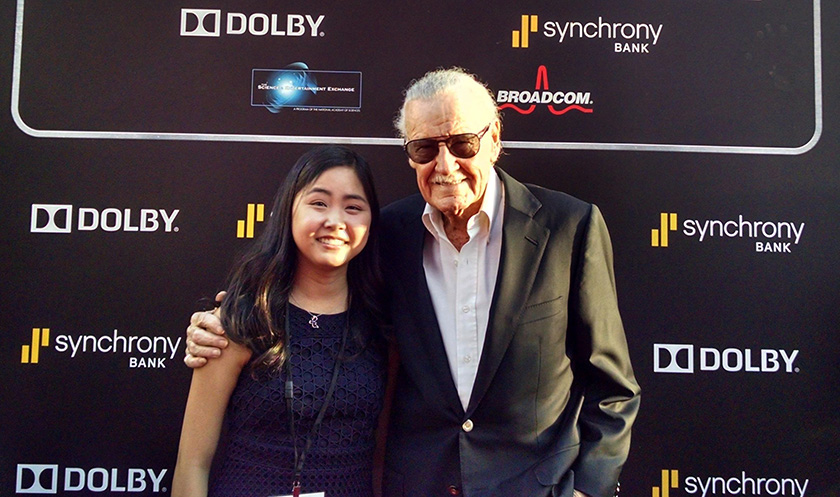
It’s not every day that a high school junior gets to meet famed comic book writer Stan Lee — on the red carpet.
But Janie Kim is no ordinary high school junior. She was a finalist in the Captain America: Civil War — Girls Reforming the Future Challenge, held by Walt Disney Studios Motion Pictures, Marvel Studios, Dolby Laboratories, Synchrony Bank, Broadcom MASTERS, and the National Academy of Sciences.
Janie, a Broadcom MASTERS alumna from San Diego, California, was one of over 1,000 young women in the U.S. who entered the challenge. They had to use science and technology to create a project that encouraged positive world change for their generations, and beyond.
Finalists of the challenge toured Walt Disney Studios and Dolby Laboratories. They learned about laser technology, sound placement, and virtual reality headsets, and also spoke with female executives at Marvel and Walt Disney who use STEM in their careers. The finalists also met with actresses, actors, directors, and more at the world premiere of Captain America: Civil War.
For the challenge, Janie developed a low-cost method to disinfect hospital rooms using surface acoustic wave devices. Read Janie’s interview to find out more about her beginnings in biomedical research.
SCIENCE FAIRS ARE A GATEWAY TO THE WORLD: I would have never guessed that doing a science fair project would have enabled me to meet people like Victoria Alonso and Stan Lee, go behind the scenes at Walt Disney Studios, and be on the red carpet at a Marvel movie world premiere! All of the other finalists are such brilliant people. They’re super smart, funny, modest, inspiring, and genuine, and we’re definitely staying in touch.
Participating in science fairs like Broadcom MASTERS definitely solidified my decision to go into STEM.
Participating in science fairs like Broadcom MASTERS, where I presented my 8th grade contact lens solution experiment, definitely solidified my decision to go into STEM. Through various science fairs, I’ve been able to meet and talk to other students who are devoted to science and become inspired by what they’ve accomplished.
DESIGNING PERSONAL EXPERIMENTS: I first became interested in science in my 8th grade science class that included doing a science fair project. My teacher, Mrs. Elaine Gillum (Mama G), was so passionate about science, learning, and research that I think it leached into me.
For my first experiment, I tested several commercial contact lens solutions against pathogenic bacteria to see which solution was the most effective. I wear contact lenses and have gotten eye infections before, so I was motivated to try to find the most effective lens solution.
This project led into testing individual components within the solutions, and then to finding a more effective combination of those compounds.
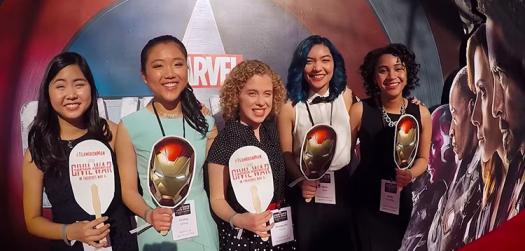
CLEANING WITH SOUND: Recently, I was given the opportunity to work with a device called a surface acoustic wave device (shoutout to Dr. Friend at University of California, San Diego). While working with the device, I wondered whether it could be combined with the new combination of contact lens solution disinfectant compounds I’d previously worked on — and it worked! The room disinfecting method combines the two different projects I worked on over the last few years.
Help inspire others like Janie Kim into science fairs. Join the Society today.
The disinfectant is placed in a tube that wicks it onto a thin piece of lithium niobate. Acoustic waves then travel across the lithium niobate’s surface, hit the liquid disinfectant droplet, and destabilize the droplet’s surface. This causes the droplet to break up into much smaller droplets. A plume of nebulized liquid is created that mushrooms out and spills down the sides of the box. It’s actually fun to watch.
The most difficult part of this project would definitely be working with lithium niobate wafers that kept cracking. Nebulizing liquids with the device heats up the lithium niobate pretty quickly, and if they aren’t cooled down, they shatter. But when I checked the agar plates the day after an experiment and saw all of the bacteria were killed, it meant that the nebulized disinfectant was a success!
There are still more trials I’d like to do for this project. But after finishing those last few trials against two more strains of bacteria, what I do next is up in the air. As for the future, I’m not really sure what I want to become yet, but I know that I’d like to stay in biomedical research.
ADVICE FOR STUDENTS WHO WANT TO GO INTO STEM: If there’s ever an opportunity to explore different aspects of STEM, go for it! I learned about engineering and microfluidics with this year’s decontamination device project — two fields I didn’t have much hands-on experience with before. It was fascinating.
Finding a mentor is very helpful! I was lucky enough to be a part of Dr. Victor Nizet’s lab these last few years and to learn from the amazing people there.
